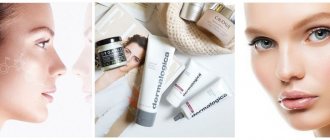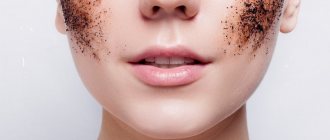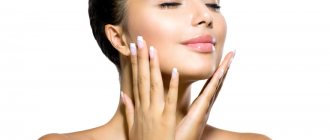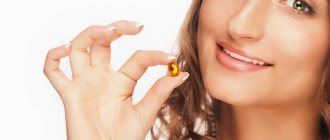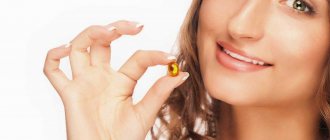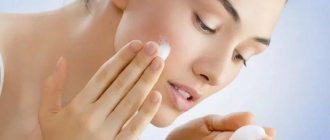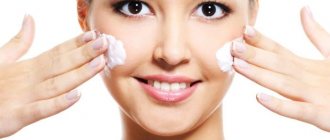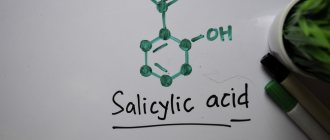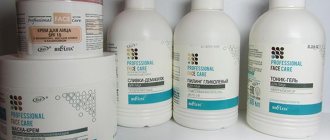Vitamin E or tocopherol is the most beneficial substance for the face. Even more: it is one of the main vitamins in cosmetology. Surely you also have some kind of facial product with tocopherol, but what do you know about it?
In general, there is not just one tocopherol, it is a whole group of similar substances. They are united by the ability to destroy free radicals, aggressive elements that accelerate cell aging and damage them. Previously, vitamin E was isolated from wheat germ, now it is mainly from soybean and sunflower oils.
In cosmetics, vitamin E can be designated as follows:
- Tocopherol acetate;
- Tocopherol succinate;
- Tocopherol nicotinate;
- Tocopherol linoleate.
What is vitamin E for?
One of the vital vitamins, the deficiency of which leads to systemic disorders in the body. It belongs to the fat-soluble category and is more fully absorbed in combination with vitamins A, C, D, zinc and selenium. It has a pronounced antioxidant property: it inhibits oxidation processes, prevents damage to healthy cells by decay products.
Vitamin E regulates the processes of tissue restoration of the skin, mucous membranes, internal organs, the production of collagen, hormones, and amino acid metabolism. Its normal level ensures timely tissue regeneration, protection from excessive ultraviolet radiation, exposure to carcinogenic substances, premature aging, normal functioning of the reproductive system, and hematopoiesis.
What to do
If you are concerned about the quality of your skin, order vitamins early. First you need to go to the doctor and find out what the reason is. Maybe the body does not have enough iron, or the person has hypothyroidism - only an examination will determine this. If the indicators are normal, the doctor will prescribe a test for vitamin levels in the blood. When there are few of them, the diet is first changed. Supplements are prescribed only to those who have digestive problems.
“Most vitamin A comes from foods rich in beta-carotene and provitamin A carotenoids. These are powerful antioxidants. They neutralize the effect of free radicals, which break down collagen and contribute to the appearance of wrinkles, explains Nadezhda Nabatnikova. “The substances also reduce skin sensitivity to ultraviolet rays, providing natural protection against redness and pigmentation caused by the sun.”
The norm for a person from the age of four is 5000 international units of vitamin A. He should receive it from food of animal and plant origin. The best source is cod liver. One teaspoon of its oil contains 150% of the daily requirement. A lot also contains beef liver, salmon fillet and tuna. The plant richest in vitamin A is sweet potato, one hundred grams of which covers the daily requirement. Kale, winter squash and turnips contain it in abundance, with carrots only coming in sixth. Important: heat-treated root vegetables are taken into account, not raw ones.
Some people, tired of acne, buy systemic retinoids and take dosages from the Internet. This is dangerous - if the dosage is exceeded, these drugs cause fetal malformations - auricular atresia, underdevelopment of the limbs, atrial septal defect and displacement of large vessels. Therefore, a dermatologist prescribes systemic retinoids after a pregnancy test and the patient’s commitment to use double contraception - hormonal pills plus a condom.
“When using systemic retinoids and other vitamin A preparations, a teratogenic effect on the fetus is possible. Therefore, even before taking dietary supplements, and even more so medications, it is worth consulting with your doctor,” says Nina Alexandrova. “The unfavorable effect of high doses of vitamin A persists even after stopping its use, depending on the drug - from 1 month to 2 years.”
Symptoms of Vitamin E Deficiency
Hypovitaminosis in childhood causes the development of dermatitis, rickets and decreased vision. Long-term deficiency slows down the development of speech, provokes anemia, neurological disorders: coordination of movements, attention.
In adults, the condition of the skin and hair worsens, inflammatory and endocrine diseases occur more often, the cardiovascular system suffers, fertility decreases, women experience menstrual irregularities, and premenstrual syndrome is severe. With severe hypovitaminosis, hormonal imbalance, infertility, and signs of early aging develop. If a vitamin E deficiency is detected, in addition to correcting the diet, it is necessary to take special pharmaceuticals.
Other acne treatments
- Salicylic Acid: This beta hydroxy acid (BHA) breaks down cellular compounds to stimulate natural exfoliation and prevent acne formation. It is best for mild acne (whiteheads and blackheads).
- Alpha Hydroxy Acids: Ahasexfoliates the skin to reduce formation. They minimize visible flaking, improve cell turnover and reduce the appearance of acne scars.
- Tea Tree Oil: Has antimicrobial and anti-inflammatory properties that minimize acne-causing bacteria and reduce the severity of acne lesions.
- Benzoyl Peroxide: Has antibacterial properties that reduce blackheads and acne lesions. However, it can irritate the skin if not used in proper concentrations. Check with your doctor before using benzoyl peroxide.
- Sulfur: Acts as a keratolytic (exfoliating) agent and is often used to soothe acne and seborrheic dermatitis.
- Retinoic acid: This metabolite of vitamin A is also known as tretinoin and is often used to treat acne. Using retinoic acid with glycolic acid (AHA) has been found to improve acne scarring.
However, all skin types may react poorly to these medications. Consult with your doctor to determine which ingredient may be appropriate for your skin at what concentration.
Before introducing a new ingredient into your skin, take proper care of it. This is the best way to avoid any complications.
How to take vitamin E correctly
When administered orally, capsules with alpha-tocopherol are swallowed whole without crushing. Drink with enough water. Recommended time of administration is during meals. It is advisable to include foods rich in vitamin E in your diet.
The treatment regimen is individual, depending on the physical condition and age. For prevention, adults are recommended to take 400 mg. vitamin per day. The course of therapy depends on the type of disorder present. It is recommended to take the vitamin cyclically: daily for several weeks, with repeat treatment after a break.
The drug does not affect the ability to drive vehicles and complex equipment, does not cause drowsiness, decreased performance, or changes in the speed of psychomotor reactions.
Rubbing into skin
The second way to use vitamin E is externally, and we’ll start by rubbing it into the skin of the face. To do this, buy vitamin E: it is found in the form of an oil solution (at the pharmacy) and in its pure form (cosmetic solution). The cosmetic solution is, of course, more concentrated. And more expensive.
It is not prohibited to use vitamin E in its pure form on the face; the main thing is to maintain safe dosages. If you overdo it, you can provoke itching and allergies, rashes and red spots. It follows from this that only a small amount of concentrate will be used.
This means that rubbing pure tocopherol makes sense if there are local problems on the face. For example, rashes, deep wrinkles, peeling. A safe amount of pure vitamin E is simply not enough for the entire face.
Therefore, most often vitamin E is added somewhere. Either in store-bought cosmetics or in homemade mixtures. Moreover, there are no substances incompatible with tocopherol: it is extremely stable.
Against dullness and signs of fatigue
If your skin doesn’t look great and it seems like you haven’t seen sunlight for a long time, don’t be upset, buy vitamin C. You can find it in solution and powder at the pharmacy. What he can do:
- improve complexion;
- lighten pigmentation;
- tighten pores;
- restore a healthy glow to the skin;
- strengthen capillaries;
- tighten the epidermis;
- reduce facial wrinkles;
- eliminate stagnant spots after acne.
Since this product is a powerful antioxidant and capillary protector, vitamin C is a must-have for sensitive skin with rosacea.
It must be added before mixing in a 4:1 ratio. That is, for 4 parts of cream, take 1 part of vitamin. If you have 2 ml of cream, you will only need 0.5 ml of ascorbic acid. A pipette to the rescue. It’s more difficult with powder, but it seems to be more effective. The proportions are the same, but measuring it is not so easy.
Attention: do not combine ascorbic acid with retinoids, high concentrations of vitamin A, or any acids (except hyaluronic acid), otherwise you will not get a radiant face, but red, irritated skin.
Cooking instructions
The recipe is simple. All of the above should simply be mixed in a glass jar and placed in a low water bath. It's simple - boil water in a separate pan and immerse the jar inside. Of course, it is necessary that it stands firmly and water must not be poured inside under any circumstances. Control its level - do not boil too much liquid.
Stir the ingredients occasionally to help them melt and combine faster. When this happens, you will need to pour them into a separate jar in which the cream will be stored. It is important to wait until it hardens before you can start using it.
This product should be stored in a dark and cool place (chilled product will also allow you to achieve an anti-edematous effect). Use it every day before bed, and very soon you will see the result.
You can use this cream at any age. Some people make a huge mistake, believing that young skin does not need care - supposedly youth forgives everything. But this is a fatal misconception. The sooner a girl begins to take care of her skin, the fewer problems she will have with it and the later the signs of aging will appear. And ladies who ignore self-care usually grab their heads at 30 years old and think why they were so “unlucky” to encounter wrinkles at an early age.
Acne on the face
Acne
Acne
Fungus
Allergy
25460 02 December
IMPORTANT!
The information in this section cannot be used for self-diagnosis and self-treatment.
In case of pain or other exacerbation of the disease, diagnostic tests should be prescribed only by the attending physician. To make a diagnosis and properly prescribe treatment, you should contact your doctor. Acne on the face: causes of appearance, what diseases cause it, diagnosis and treatment methods.
Definition
The sebaceous glands in human skin are located at the base of the hair follicle. They produce sebum, which moisturizes the skin and protects against the negative effects of the environment, bacteria and fungi. Hypersecretion of the sebaceous glands provokes the formation of pimples (acne, blackheads). On the face, they are most often localized in the locations of large sebaceous glands (on the forehead, temples, cheeks, nose and chin).
Types of acne on the face
In its most general form, acne falls into one of two types:
Non-inflammatory elements
(comedones) - look like small tubercles or dots of different colors. Comedones can be open or closed.
- Open comedones look like dense surface-type rashes, usually gray or black in color, which gives them the oxidative reaction of their contents with oxygen.
- Closed comedones, subcutaneous pimples (milia) look like white bumps or dots that look like small grains of millet. Accumulated sebum has no way out, which leads to painful inflammation. Closed comedones often turn into classic red pimples.
Inflammatory elements
are immediately noticeable due to their size. The skin around them becomes thinner and redder, and the purulent contents of the pimple are visible through it. When palpated, painful or uncomfortable sensations usually occur. There are several types of inflammatory rashes:
- Papules (red pimples) are inflamed comedones without obvious purulent content. They look like small red or pink balls protruding above the surface of the skin; there is no white head. If a papule has formed at the site of an open comedone, then a dark plug can often be seen through the skin.
- Pustules are infected papules or, more simply, pimples with purulent contents and a white head, surrounded by inflamed skin.
They appear when, in addition to sebum and bacteria, dead skin cells get into the pores. Pustules are cone-shaped, flat or spherical in shape. Their color can vary from white to yellow or green. Green color means the addition of a secondary infection, and if you squeeze it out on your own, there is a high probability of its penetration into the blood. - Nodules (nodules) are deep, hard subcutaneous papules of bright red, bluish or purple color, ranging in size from 1 to 3 cm, protruding to the surface of the skin, often accompanied by purulent discharge. After recovery, pigment spots and scars are left behind.
- Cystic acne is a sign of damage to the deep layers of the skin, indicating the presence of inflammation with the formation of pus. Cysts located at a short distance from each other tend to merge, forming a whole chain connected by fistulas.
Cystic acne is difficult to treat and always leaves noticeable marks on the skin.
Possible causes of acne on the face
So, acne appears as a result of excess sebum production, which clogs the skin pores. If the pore is partially closed and there is air access into it, acne begins to form. At first they look like blackheads surrounded by inflamed skin - the so-called blackheads. In a completely clogged pore, like in a container, anaerobic bacteria ( Propionibacterium acnes or Malassezia
), provoking the inflammatory process and suppuration.
But what makes the sebaceous glands work so actively? It is believed that one of the reasons lies in the high level of androgens (male sex hormones), which stimulate the production of sebum. The development of hyperandrogenism can be facilitated by digestive problems, stress, diseases of the kidneys and adrenal glands, endocrine and reproductive systems.
It is important to mention that rashes on the face that look like pimples can be a symptom and manifestation of other, sometimes very serious, dermatological diseases (acneiform dermatoses), which are in no way related to the functioning of the sebaceous glands.
Acne on the face can be a symptom of a number of diseases (dysfunction of internal organs, hormonal dysfunction, lack of vitamins, decreased immunity), as well as poor environmental conditions and improper skin care. We list the main diseases, conditions and factors that result in skin rashes.
- Physiological changes in hormonal status: puberty, second phase of the menstrual cycle, pregnancy, lactation, menopause.
- Diseases of the endocrine system: polycystic ovary syndrome, hypothyroidism, tumors of the endocrine glands.
- Thickening of the stratum corneum of the epidermis (hyperkeratosis), when dead cells of the epidermis are not exfoliated, but remain on the skin, clogging the sebaceous glands.
- Liver diseases and intoxication caused by them.
- Poor nutrition and vitamin deficiency:
- The predominance of fast carbohydrates (fast food, baked goods, fried, fatty foods) in the diet provokes an increase in blood glucose levels and a sharp release of insulin, which, in turn, affects the increase in testosterone levels.
- Excess omega-6 fatty acids can aggravate inflammatory processes in the skin (such phenomena can be observed when consuming large amounts of fish and poultry raised on animal feed).
- Abuse of dairy products, sunflower, peanut, soybean oils and margarine often causes hyperfunction of the sebaceous glands.
- Deficiency of zinc, vitamins A and E, Omega-3 fatty acids.
) also play a certain role in the formation of acne and, if not their direct cause, then certainly complicate treatment.
Which doctors should you contact if acne appears on your face?
If you have skin rashes, you should consult a dermatologist and cosmetologist. However, treatment often requires an integrated approach, which involves treating the disease of which acne is a symptom. In this case, consultations with a neuropsychiatrist are necessary.
Diagnostics and examinations for the appearance of acne
Pimples and their localization are a kind of messenger that transmits information about disruptions in the functioning of organs or systems. Most often, acne occurs in the so-called T-zone (forehead, nose, chin) - here the sebaceous glands are most active and the pores are enlarged. But acne is often found on the cheeks and cheekbones (U-zone). This is due to various reasons and the state of the body. A special guide map “Types of acne and what they mean” has been compiled. Thus, the middle part of the forehead corresponds to the lower part of the digestive tract, the small intestine and the bladder, the area near the ears - to the kidneys, the eyelids and the area around the eyes - to the liver, the temporal region - to the gallbladder, the middle third of the face, cheekbones - to the lungs, chin - to the stomach, the pelvic organs, the nose - the pancreas and heart, and the lower part of the cheeks and lower jaw - the lower gastrointestinal tract.
Diagnosis begins with a thorough examination of the skin, collecting anamnesis (information about past illnesses, operations, chronic diseases, heredity) and establishing a connection between the rashes and lifestyle, nutrition, and habits.
If the nature of the disease is not obvious, laboratory tests are prescribed.
- Clinical blood test.
